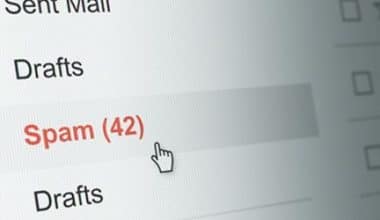The first time a new subscriber or customer interacts with your company is critical. Welcome emails give new subscribers more touchpoints, establish brand authenticity, and incentivize engagement. Your company can establish trust, eliminate uncertainty, and ensure effective calls to action in seconds. You can personalize and strategically improve the content of your welcome emails using an automated workflow to improve conversion rates. In this guide, we will analyze all about a welcome email, some example emails, and how to welcome an onboarding employee or customer. Let’s get into detail.
What is a Welcome Email?
Welcome emails are the first point of contact for a new subscriber or potential customer. It’s a welcoming message that establishes the new relationship while delivering videos, special offers, signup forms, or simply a general greeting. This initial interaction’s primary goal is to confirm registration and welcome the new subscriber aboard.
A good welcome email is brief but packed with information, messaging, and actionable steps for the reader. It will demonstrate a customer-first approach to business while conveying the authenticity and relatability of your company. Welcome emails are the first opportunity for subscribers to have personalized experiences.
Welcome Email Practical Example
#1. The video greeting
Showing your new customer what you have to offer rather than telling them can help increase engagement with your welcome email content.
A short video introducing your company brings it to life in a way that text alone cannot. This could be a message from your founder that humanizes your brand and tells your story, or it could be video clips of your product in action. You can also use an animated GIF in your email to convey your brand’s personality.
#2. The personalized welcome message
You can tailor your introduction to each contact by changing the welcome email content based on what you know about your new customer. To make it as valuable as possible, you can send a post-registration welcome email to the user’s signup method. It is as simple as including the contact’s name in the email body and subject line. Alternatively, you can display various content blocks based on criteria such as the subscriber’s interests.
Add questions to your email signup form to learn more about subscribers if you want to try this tactic for your welcome email. Then divide the list into sub-lists based on their interests and send them different content in follow-up emails.
#3. The self-introduction
You can’t assume that first-time visitors know everything about your company. Your welcome email should emphasize your unique selling points to reassure your new customer that you are the right choice for them. One word of caution: this does not imply that it should be all about you. Instead, focus on the advantages for your new contacts.
#4. The get-to-know-you email
If you prefer to keep your subscription form short, your welcome email can provide audience insights.
Use it to learn what your subscribers want, such as the content they’re interested in or their preferred email frequency. This information is not only useful for your strategy, but it also shows your audience that you are serious about meeting their needs. Rather than soliciting direct responses, provide a link to a profile update form. You’ll gain a better understanding of each contact’s interests and preferences, which will aid in email list segmentation.
#5. The product showcase
A welcome email to a new customer is an opportunity for B2C companies to showcase their best products so that a potential customer can’t help but browse. Highlight your flagship product or highlight top sellers and new arrivals. Furthermore, this welcome email is straightforward and aesthetically pleasing — an important benefit for a lifestyle brand. To draw potential customers into the brand’s vision, the template is clean, minimalistic, and muted in color.
#6. The special offer welcome gift
You can increase sales from your welcome email by including incentives such as discount coupons or free shipping as a thank-you for signing up. This strategy works well for e-commerce companies because the email can direct customers directly to their online store to redeem the offer.
To increase open rates, highlight the offer in the subject line of your welcome email.
#7. The onboarding welcome email
When a customer converts, your goal should be to get them to use your product as soon as possible. The Onboarding welcome email should provide the new customer with all of the information and motivation they require. The content of the onboarding welcome email should emphasize educational resources such as tutorials and tips to assist new users in getting started and making the most of your product.
Through clear instructions and a helpful GIF, the initial welcome email encourages a customer to take the first steps in getting set up. The CTA button then directs them to the product for testing. Finally, the customer quote adds a nice touch by emphasizing the benefits of the products.
#8. The resource delivery email
Lead magnets such as cheat sheets, ebooks, and free templates are excellent ways to entice prospective customers to join your email list. However, if your first email only contains a link to the free resource, you’ve skipped a step.
You’ve already enticed the contact with something they want. So now it’s time to guide them through your funnel to a sale.
#9. The customer seal of approval
Another strategy for gaining new contacts without having to brag about yourself is to let your loyal customers do it for you. Using social proof in your welcome message will reassure email subscribers that they made the right decision by choosing your company and encourage further engagement.
#10. The storytelling approach
Long-standing businesses or families can benefit from telling their brand story in welcome emails. It’s a great time and place to talk about your values, mission, and roots. The typical audience for such businesses values a bit of history, tradition, and the origins of the modern brand.
10 Best Welcome Email Example from Brands
Here are some great welcome email examples and why they work.
#1.Cratejoy
Cratejoy is a textbook example of how a welcome email should look, and it knows exactly how to engage its new subscribers. The header greets the recipient warmly, and a clean image shows an inviting subscription box. The copy that follows describes what to expect in future communications, and a valuable coupon completes the messaging before the CTA.
#2. LEGO VIP
Sometimes welcome emails are used for more than just greetings. This welcome email example emphasizes the benefits of being a LEGO VIP member by inviting recipients to sign in to their accounts multiple times on the company’s website. Readers are compelled to act because of the repetitive language and the promise of rewards.
#3. Cameo
The welcome email example from Cameo is all about the calls to action. It describes how to interact with the company and encourages behavior that goes beyond a simple like or follow. Cameo sends a clear message by highlighting app features and encouraging downloads: Keep engaging!
#4. GoodRx Gold
This welcome email example is intended to ensure that all subscribers understand exactly how to use the service for which they signed up. The message from GoodRx reminds recipients of the benefits of membership while also explaining how it works. The mission of this email is driven by clear instructions and visible benefits.
#5. Ruggable
Welcome emails don’t have to be difficult. Ruggable employs a simple yet entertaining design, relying on cute imagery to capture the recipient’s attention. The message is brief, praising the new subscriber for their “excellent taste.” Following the positive reinforcement, the CTA in the email includes an enticing offer.
#6. HalloweenCostumes
The HalloweenCostumes delightful welcome email example has it all: friendly messaging, product highlights, and a special discount, all wrapped up in a beautiful design. A prominent header offers the recipient a “special gift” of 20% off, with a CTA button directly beneath, and a slew of dynamic images seals the deal.
#7. Express
Express’ welcome email is succinct, sweet, and to the point. Recipients are encouraged to act quickly, as they will receive a 20% off coupon for their “wardrobe upgrade.” While the email lacks eye-catching imagery, its concise CTA is more than sufficient to convert new subscribers into paying customers.
#8. Food52
When it comes to Food52’s welcome email, the preview text at the top of the email, “We brought snacks,” does exactly that.
The preview text, also known as a pre-header or snippet text, is the copy that is pulled from the body of an email and displayed next to (or beneath) the subject line in someone’s inbox. So, when you see Food52’s welcome email in your inbox, you already have a sense of their brand’s personality before you open it.
#9. Kate Spade
Kate Spade uses a simple but effective tactic in their welcome emails to express their appreciation to those who take the time to subscribe. They write “Thank You” in large, bold letters. Kate Spade recreates the feeling of receiving an actual thank you letter in the mail by placing that “Thank You” note on an envelope. (The 15% off discount code also helps.)
#10. Lyft
Lyft has the perfect “attitude” that welcome emails should exude. The company’s simple but vibrant welcome email focuses entirely on the app’s look and feels, delivering a design that’s as warm and smooth as the rides Lyft wants to provide. Simultaneously, the email’s branded pink call-to-action draws your attention to the center of the page to “Take a Ride,” using inviting language that doesn’t make you feel pressured as a new user.
How to Write a Welcome Email to a New Employee
A welcome email to a new employee is a document sent by an employer to a new employee to welcome them to their new workplace, team, and organization. A welcome email sent to new employees includes a warm greeting as well as important information about their first day at their new job.
Furthermore, a welcome email can boost employee satisfaction and motivation. To familiarize yourself with the process, let’s go over how to write a welcome email for a new employee in six steps.
#1. Start with the subject line
The most effective subject lines promise something of value.
To put it another way, your subject line must persuade the employee that the welcome email contains useful information or content that will pique their interest.
#2. Show enthusiasm
The best thing an employer or human resource manager can do is welcome new employees and show that they are as excited about their arrival as they are. As a result, be friendly rather than aggressive, and show new hires what kind of community they are entering. We recommend that you use the word “excited” – or a synonym for it, while writing the welcome email for a new employee.
#3. Give an overview of the company
Giving new hires an overview of your company will help them feel more informed and connected to their new workplace. Consider the company overview to be a primer on your company. Fundamental business information should be included.
#4. Address key values
Core values help organizations make critical decisions while also keeping everyone on the team engaged, particularly during times of transition, struggle, or change. Furthermore, companies can organize applications and interviews around their core values to ensure that the candidates they hire share the company’s most important ideals. As a result, sharing your core values in your welcome letter is critical.
#5. Talk about the first days
Even if you write your welcome email in a more casual tone, a few key elements must be included. To begin, always include the date and time of the employee’s first shift in the welcome email. Second, employees should always be informed of their current institution’s location. Third, include a first-week agenda in your welcome communication to new hires, including a schedule of employee orientation sessions and team projects that provide new employees with direction and prepare them for their first week on the job.
#6. Sign off politely
Now that you’ve covered all of the bases in your welcome letter, it’s time to wrap it up in a respectful and professional manner. It’s also the last thing your recipients will read, so keep in mind that the last impression they get is likely to be the most memorable.
What is the Best Welcome Email?
The best welcome email is “Telling the brand story”.
How do you Send a Warm Welcome Email?
To start a welcome email, say something like, “Congratulations on your new position, and best wishes for your first day at [company name].” We want you to know that we believe in you and support you in all that you do here.”
How do you Write a Welcome Flow Email?
You can send a welcome flow email by:
- Make a giveaway.
- When appropriate, redirect to your site.
- Remind them to follow you on social media and try to incorporate these into your brand story.
- Make them respond to an email by asking a question.
- Consider an existing customer.
How do I Start a Welcome Message?
Some good examples are:
- Welcome!
- Hello!
- Thank you for visiting our website!
- Thank you for stopping by!
- We hope you find what you’re looking for and have a pleasant stay.
- Have a wonderful day!
- Thank you for your inquiry!
- We are excited to serve you.
What is a Good Welcome Message?
Try this example to make a good welcome message:
- “We are overjoyed to have you on board!
- We are delighted to have you join us!
- I’m looking forward to working with you to make things happen!
- We extend our heartfelt greetings!”
How do you Welcome Someone Professionally?
Examples of welcome messages to a new team member:
- ‘We are overjoyed that you have joined our team!
- ‘I welcome you on behalf of our team and hope you enjoy working with us.
- ‘Congratulations on your new position!’
- ‘Greetings on behalf of the department!
- ‘We are thrilled that you have decided to join our team.
- ‘Welcome on board!’
How do you say Welcome in Formal?
These are ones you might use with people you don’t know well. “You’re very welcome” and “my pleasure” are two examples.
What are some Welcoming Words?
- Glad welcome: “It’s a glad welcome we bring to you this morning, filled with the desires, hopes, and dreams we all share.”
- Hospitable welcome: “We’re delighted to offer the most hospitable welcome we can.”
- Amiable welcome: “Dear guests, look around you!”
Conclusion
First impressions matter, whether in person, over the phone, or via email. Your welcome email is often the first opportunity a prospective customer or contact has to see what your brand is all about, and if you don’t nail it, they’ll likely go elsewhere.
- WELCOME NEW EMPLOYEE: Best Messages, Email, Later & Gifts to Send
- DRIP CAMPAIGN: A Guide to Drip Campaign Marketing
- Credit Card Churning: Definition and How It Works
- TOP 13+ SKATEBOARD BRANDS With the Best Reviews in 2023(Updated!!!)
- EMAIL MARKETING TOOLS: The Top 10+ Automation Tools (+Free Tips)
- SIP PHONE: What it is, How it Works and Softwares
- ATTRITION: A Detailed Explanation of Attrition in Business






